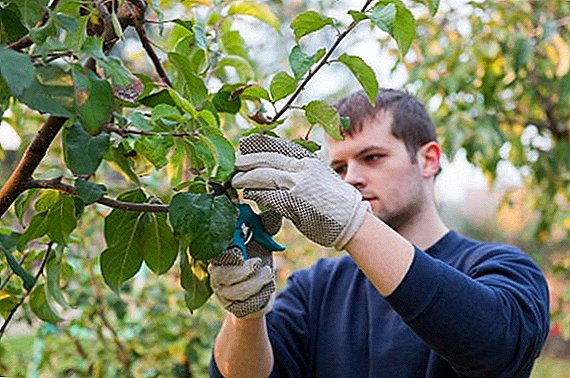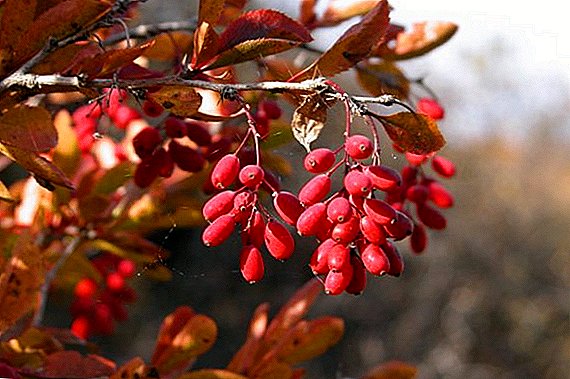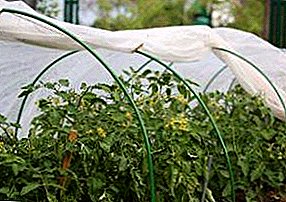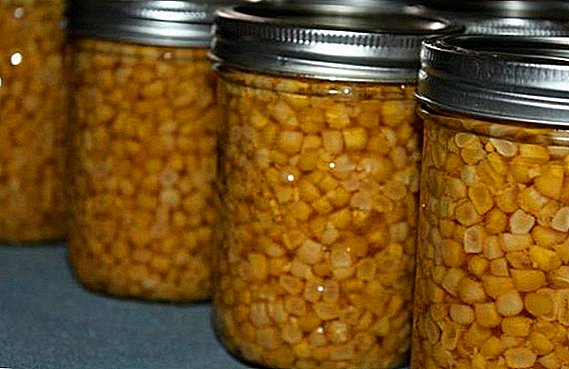 On the shelves of stores sold canned corn in cans. It is often bought, as it is an ingredient in many salads and other dishes. But such a blank can be done by yourself at home and you can cook not only grains, but whole cobs.
On the shelves of stores sold canned corn in cans. It is often bought, as it is an ingredient in many salads and other dishes. But such a blank can be done by yourself at home and you can cook not only grains, but whole cobs.
The useful corn canned
During heat treatment corn hardly loses its qualities and canned food from it is useful due to some properties:
- contains few calories (58 kcal per 100 grams) and will be useful in the diet of people who want to lose their weight;
- contains vitamins of group B, ascorbic acid, vitamin A and beta-carotene, niacin;
- contains macro - and microelements - sodium, potassium, phosphorus, calcium, magnesium, selenium, manganese, copper, iron and zinc;
- substances contained in corn kernels have antioxidant and oncoprotective properties;
- contains amino acids, including essential;
- does not cause flatulence, unlike just cooked;
- on it almost no allergies;
- gluten free.
Did you know? Conservation of young corn cobs of small size is more useful than of kernels.
Which is better to take corn for canning
For blanks, you should take a young, but already well-ripened corn of sugar varieties. Check if the corn is old by pressing on any corn kernel with a fingernail. If it does not pick out the milk, and a piece of it remains on the nail, then it is old and should not be taken, as even after a long boil its flesh can remain hard.
Learn more about the varieties of corn, in particular, the best varieties of corn for making popcorn.
It should also be noted that the cobs have juicy and fresh leaves and the color of hairs (the lighter the better). 
Preliminary preparation
Before cooking, clean the corn cobs from the leaves and hairs, cut off dry or unripe tops. If there are rotten areas - delete. Well wash the corn cobs under running water.
Wash jars with soda and sterilize together with the lids in any way you choose (steamed, baked and others).
Prepare corn for the winter can also be a method of freezing.
How to preserve corn
Ingredients for preserving corn cobs:
- corn - 9-10 pieces;
- salt - 2 tablespoons;
- sugar - 4 tablespoons;
- Vinegar 70% - 1 tsp.
Ingredients for preserving corn kernels:
- corn for 4 half-liter jars;
- salt - 1 tablespoon;
- sugar - 3 teaspoons;
- water - 1 liter.
Important! Not all homes have 70% acetic acid. But one teaspoon of this essence is replaced by 9 spoons of 9% vinegar or 12 spoons of 6% vinegar.
In the cob
When canning whole corn cobs, perform the following steps:
- Put the prepared cobs in a pot of sufficient size and pour water. Do not put salt in water.
- Cook young corn 30 minutes, and the old - about an hour.
- The boiled cobs are thrown back on the sieve and washed under running cold water from the tap.
- Put warm corn in a sterilized three-liter jar. To fill this container more closely, the last cob can be cut in half and placed on top.
- Add 2 tablespoons of salt and 4 tablespoons of sugar to the jar. Fill with boiling water and cover with a lid.
- We put a jar of corn cobs for sterilization in a large pot, first putting a rag on its bottom so that the glass does not come into contact with the iron.
- Fill the pot with warm water. The can with the contents should be covered by it at 2/3.
- Bring to a boil and sterilize for 40 minutes at a quiet boil.
- We take out a jar of cobs and add 1 teaspoon of 70% vinegar to it. We roll, turn over the container onto the lid and see if there is any sugar or salt on the bottom. If there is, then put the jar on the edge and roll a little until the sediment is dissolved.
- Wrap the jar to cool.







Read also about the beneficial properties and recipes for harvesting (freezing) green peas.
In the grains
When canning corn grains perform the following actions:
- Boil the cob in the same way as in the previous recipe and, throwing it back on a sieve, wash it with cool water from the tap.
- Carefully scrape the steamed cobs of grain, prying them first with a knife and then with your hands.
- Pour the grain into sterilized half-liter jars and cover with lids.
- Cooking marinade. To do this, add 1 tablespoon of salt and 3 teaspoons of sugar per liter of water, bring to a boil and cook to dissolve bulk ingredients.
- Fill the obtained brine banks with corn kernels.
- Cover them with lids and put in a saucepan with a cloth at the bottom for sterilization. Fill with warm water for 2/3.
- Bring to a boil, reduce the heat and sterilize with continuous boiling for 40 minutes.
- We get banks with grains, roll up. We put on the cover and wrap.






Did you know? Corn was brought to Europe from America, where it began to be cultivated about 7-12 thousand years ago in the southern parts of modern Mexico. Scientists suggest that it is the most ancient cereal culture.
What is combined and where you can add
In many cookbooks and on the Internet you can find many different recipes using canned corn, because it is combined with most products. First and second dishes are made from it - these are soups, salads, vegetable stews, casseroles, etc. This product is used in meat, egg and mushroom dishes. It gives a spicy taste and in combination with seafood - crab sticks, squid, fish, shrimp.  But most often canned corn kernels are used in salads, in them they are well complemented by fresh vegetables - cucumbers, cabbage, tomatoes, carrots. Such corn is used for cooking dishes with boiled vegetables - potatoes, cabbage, beets, carrots.
But most often canned corn kernels are used in salads, in them they are well complemented by fresh vegetables - cucumbers, cabbage, tomatoes, carrots. Such corn is used for cooking dishes with boiled vegetables - potatoes, cabbage, beets, carrots.
Check out the recipes for harvesting vegetables: mixed vegetables, cucumbers (slightly salted, cold-salted), cabbage (white, red, cauliflower, broccoli), carrots (caviar, frozen, dried), tomatoes (green, cold-salted, and fermented; salted , tomato juice, ketchup, lettuce with tomatoes, tomatoes in their own juice, tomatoes with mustard, "Lick fingers", adjika).
Where to store
Canned corn in glass jars is stored no more than 3 years. But the store product in cans no more than 2 years. This is due to the fact that due to the metal content is oxidized faster and its shelf life is reduced. Such preservation is stored in a dark dry place at room temperature of 22-25 ° C.
For storage is well suited cellar, storage room or just a shelf in the kitchen. After opening the lid and using the corn completely, the jar with it is placed on the shelf of the refrigerator and stored for no more than a day. At the same time, it is better not to drain the pickle, because without it the corn kernels are stored less and lose their taste qualities faster. 
Why can lid swell
When opening corn, it is very important to turn on the lid; if it is swollen, then there is a chance that the product has deteriorated and may cause poisoning.
The reasons for swelling of the lid or damage to such preservation may be as follows:
- storage of canned corn at high temperature (above 25 ° C), especially in the summer heat. In this case, harmful and dangerous microorganisms have not yet formed, but certain chemical processes have led to the lid swelling. And yet in this case it is better not to risk and refuse to eat such a product;
- violation of cooking technology;
- a hermetically rolled up jar - this happens when an unsuccessful roll-in or when the jar lid does not fit
- lack of sterility of the container, if the jars and lids were poorly sterilized;
- substandard products. This happens when the vegetables were poorly washed or rotten;
- corn cans tend to "explode." This is due to the high content of proteins and the almost complete absence of acids. In order to eliminate this problem during conservation, it is recommended to add a little vinegar, lemon juice or citric acid. To eliminate this trouble, you can not apply acid, but simply sterilize the jars with this product for at least two or three hours.
Important! Sterilization of cans is recommended to be carried out several times (2-3 times), since after one sterilization spore microorganisms may not completely die.
Video: 2 ways of canning corn for the winter
Corn canning is not a very time consuming and costly process, but it is important to adhere to cooking technology, especially with regard to sterilization, since this product contains low acidity. If you are not lazy in the summer, then for the whole winter you can provide yourself and your family with this useful product, which is often used to make festive salads.












